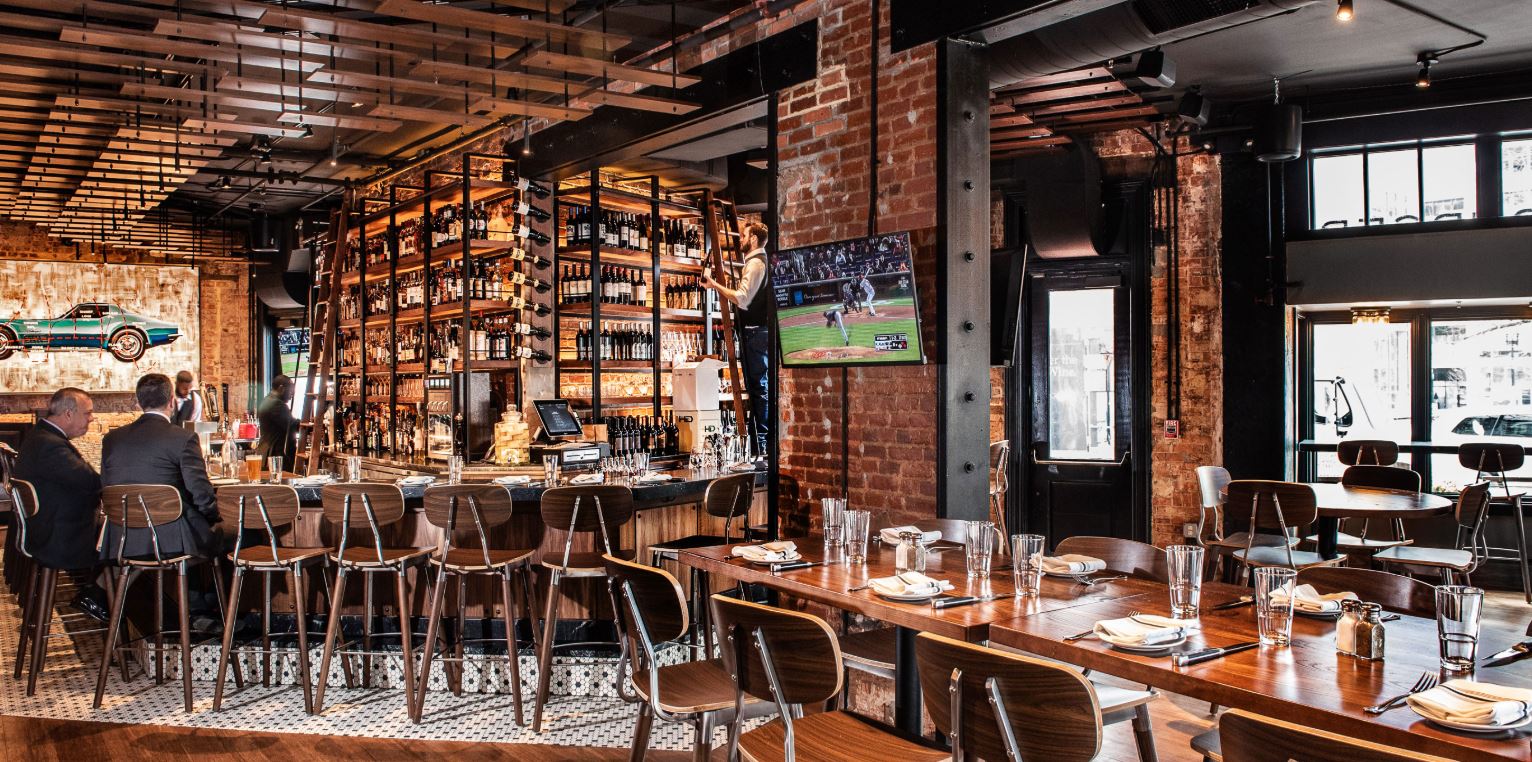Savor Genuine Oriental Cuisine With a Pan-Asian Twist for a Cooking Adventure
Beginning on a cooking trip through authentic Asian cuisine, improved with a Pan-Asian twist, offers a distinct opportunity to check out the rich tapestry of flavors that define the area's varied culinary customs. This experience invites you to enjoy the charming equilibrium of tastes-- pleasant, salty, spicy, and sour-- harmonized by fragrant natural herbs and flavors. Think of the cutting-edge fusion of Thai curry and ramen or the unexpected joy of sushi burritos. As you consider these enticing dishes, think about the cultural stories and historical impacts that shape them, each bite supplying a tale waiting to be uncovered.

Checking Out Pan-Asian Flavors
In the world of international gastronomy, Pan-Asian cuisine stands out for its remarkable diversity and the unified interaction of tastes from numerous Oriental cultures. This culinary method celebrates the distinct ingredients and abundant traditions discovered throughout the continent, developing a tapestry of preferences that is both interesting and gratifying. Trick to Pan-Asian cuisine is its capacity to stabilize different flavors-- wonderful, salted, spicy, and sour-- while highlighting the freshness and top quality of each ingredient.
From the umami-rich soy sauce of Japan to the intense chili peppers of Thailand, Pan-Asian food offers an extensive combination of flavors. These components are frequently integrated in inventive ways, boosting meals with layers of intricacy. As an example, making use of great smelling natural herbs such as lemongrass and cilantro, usual in Vietnamese and Thai cuisine, adds a refreshing brightness to recipes, while the consolidation of coconut milk delivers a creamy, abundant texture.
The emphasis on fresh produce and aromatic spices guarantees that each dish is not just a feast for the palate yet additionally for the detects. Pan-Asian cuisine invites diners to begin on a cooking journey, checking out the vast and differed landscapes of Oriental gastronomy with every bite.
Combination Dishes to Try
While Pan-Asian food is celebrated for its conventional tastes, the modern-day cooking landscape is significantly embracing blend dishes that mix these traditional aspects with influences from other areas. This cutting-edge approach not only honors the rich heritage of Asian cookeries but also presents novel taste experiences that attract contemporary tastes buds.
A prime instance of such a blend dish is the Korean-Mexican taco, where marinated bulgogi beef is covered in a cozy tortilla, topped with kimchi and a zesty gochujang-infused salsa. This mix weds the bold, savory tastes of Korea with the vibrant, fresh aspects of Mexican cuisine. In a similar way, sushi burritos have acquired appeal, amalgamating the delicate creativity of Japanese sushi with the hearty, hand-held benefit of a burrito, usually including combination components like tempura shrimp and avocado with a drizzle of wasabi mayo.
An additional noteworthy meal is Thai curry ramen, which infuses the creamy, aromatic flavors of Thai curry into the calming broth of typical Japanese ramen, developing an unified blend that entices the detects. These blend recipes extend past plain novelty; they stand for a cooking discussion in between cultures, motivating exploration and innovation on the planet of Pan-Asian food.
Essential Components and Seasonings
To absolutely appreciate Pan-Asian cuisine, one should understand the crucial ingredients and spices that create its structure. This varied culinary style draws from an abundant tapestry of Eastern customs, using an unified mix of flavors and structures. Key active ingredients consist of soy sauce, fish sauce, and oyster sauce, which give a mouthwatering umami deepness important to Oriental meals. Complementary to these are rice vinegar and mirin, offering a fragile acidity and sweet taste.
Aromatic aspects are critical, with garlic, ginger, and lemongrass being ubiquitous throughout various Pan-Asian dishes. These components give an aromatic base that boosts the complexity of tastes. Flavors such as star anise, cardamom, and cinnamon introduce heat and character, echoing influences from areas like China and India.

Food Preparation Methods and Tips
Mastering the art of Pan-Asian cuisine needs experience with its distinctive food preparation strategies, each adding to the dynamic tapestry of tastes this cooking tradition is celebrated for. Central to these methods is the stir-fry, a quick cooking strategy that protects the dietary stability and vivid shades of active ingredients. Utilizing a wok, the stir-fry method enables for even warmth distribution, vital for attaining the characteristic appearance and taste equilibrium of Pan-Asian meals.
One more essential strategy is steaming, specifically common in Chinese cuisine. This gentle approach keeps the all-natural flavors and nutrients of ingredients, making it excellent for fish and shellfish and veggies. Dumplings, a precious staple, usually benefit from steaming, resulting in soft, succulent textures.
Barbecuing, likewise essential, imparts great smoky depths to recipes such as Oriental bulgogi or Japanese yakitori (Instagrammable restaurants Islamabad). This method commonly involves marinating components, enabling tastes to permeate deeply before cooking over an open flame or hot plate
Last but not least, understanding the art of stabilizing flavors-- pleasant, sour, salty, bitter, and umami-- is chipotle near me vital. Properly layering these aspects can boost a recipe from common to amazing, offering a facility and satisfying cooking experience that symbolizes the significance of Pan-Asian food.
Eating Experiences Worldwide
Across the globe, Pan-Asian food supplies an unmatched dining experience, commemorated for its rich tapestry of flavors and vivid discussions. This culinary phenomenon has gone beyond social limits, catching the hearts and tastes of food lovers worldwide. In this link worldwide cities like New York, London, and Sydney, Pan-Asian restaurants act as fusions where cooking practices from Thailand, Japan, China, and beyond converge, supplying restaurants with an eclectic mix of meals that highlight the area's variety.
The global allure of Pan-Asian cuisine hinges on its capacity to offer both credibility and innovation. Cooks masterfully wed traditional active ingredients such as lemongrass, soy sauce, and miso with contemporary strategies, causing dishes that are both acquainted and refreshingly new. This combination allows diners to start a cooking journey that respects heritage while welcoming modernity.
Furthermore, dining experiences are raised with attentively created settings that reflect the values of Pan-Asian appearances. From minimal Japanese-inspired insides to lively Thai-themed areas, each dining establishment uses an one-of-a-kind setting that enhances the cooking offerings. Consequently, clients are not merely eating a meal but partaking in a cultural experience, making Pan-Asian dining an absolutely international phenomenon.
Conclusion
The expedition of Pan-Asian cuisine provides a profound understanding of the elaborate interaction of flavors and culinary customs across healthy fast food Asia. By welcoming fusion meals such as Thai curry ramen and sushi burritos, the culinary trip not only highlights the adaptability of typical active ingredients however likewise showcases ingenious contemporary techniques. This gastronomic journey, enhanced by crucial flavors and cooking techniques, offers a special possibility to value the multiculturalism and cooking artistry that specify Pan-Asian cuisine on a global range.
Getting started on a cooking journey through authentic Asian cuisine, improved with a Pan-Asian twist, offers an unique opportunity to check out the abundant tapestry of flavors that specify the area's diverse culinary customs.In the world of worldwide gastronomy, Pan-Asian cuisine stands out for its remarkable diversity and the unified interaction of flavors from various Eastern cultures. Key to Pan-Asian cuisine is its capacity to stabilize contrasting flavors-- sweet, salted, spicy, and sour-- while highlighting the freshness and quality of each ingredient.
